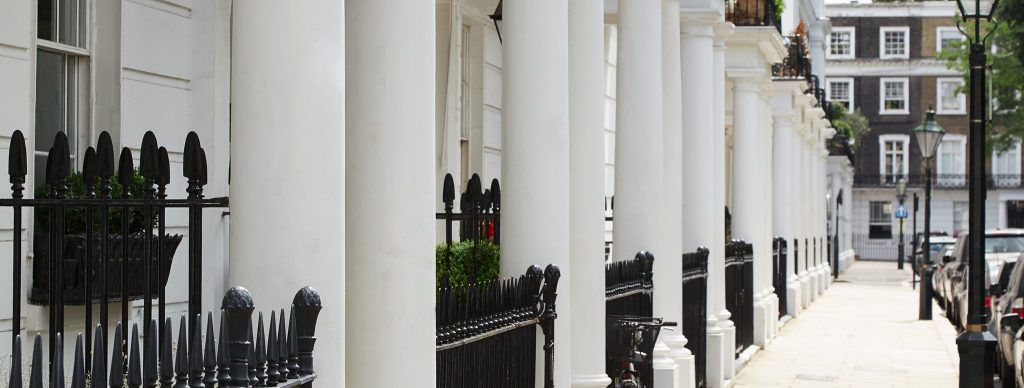Prime Central London Property Market Review.
“God bless us, every one!” cried Tiny Tim at the end of Dickens’s A Christmas Carol, at which point the reader could safely put down the book, with a glisten in his or her eye, and reflect on how well everything had turned out. And so it seems with the prime central London property market where yet again, in the face of dire prognostications, it all seems to have turned out unexpectedly well. However, that is not to say that the horizon ahead is entirely clear of unwelcome shadows.
The prime central London property market now firmly divides down a demographic fault line that separates the international marketplace from the domestic. The international marketplace is still strong, with firm prices and short supply; however, the further up the price scale you go, the fewer domestic buyers you see.
Up to 2m is a predominantly British market place.
2-5m is a mix of international and domestic, and this price bracket has been hardest hit by the hike in stamp duty. Between 2-3m is a sluggish market as this is just into the 7% stamp duty area, and hurts most the people who can afford it the least.
5-10m is still a strong market with a strangled supply. This is probably a 70:30 split, international verses domestic. Getting to the front of the queue for the best properties is very hard – which is, of course, where we come in.
10m plus is predominantly an international marketplace, which ironically has a decent supply of overpriced, second-rate stock, which is largely being avoided by savvy buyers, such as our clients. Quality is the name of the game here, and blue-chip, first-rate houses are still closely fought over. Anything second rate or over-priced has an inglorious future, as buyers in this segment of the market are looking for a long stay and want to get their purchases absolutely right.
What does constitute a sea change right across the market is the increasing reluctance of buyers to take on top-to-bottom refurbishments, which is chiefly a consequence of an ever more intransigent and mulish planning process. Whilst people are happy to step up to the mark and buy central London houses, even at today’s figures, very few want to buy profoundly unmodernised houses as the planning process now takes so long that such a purchase represents a property ‘future’.
For example, if you want to undertake a straightforward refurbishment of a Kensington house, without any fundamental changes of layout or structural work, the planning process will take at least 6-9 months. If structural alterations are involved you are looking at 9-12 months, and if the house also happens to be listed, think 12-24 months. The building work will take a year (for something simple) and 2 years for a full structural job – and the taller and thinner the house, the longer the work will take.
This means that a full refurbishment of a listed, central London house will take 3-4 years from start to finish. In the modern, uncertain world of employment 5 to 7 years is the horizon that most people have, so a 4-year house refurbishment is just not a realistic proposition. Changing a kitchen and the bathrooms is generally felt to be fine (after all, who wants to live with someone else’s loo seats) but much more than that tends to generate a creaking noise, that of a leather wallet being slid back into a pocket.
The key areas in central London for 2013 are likely to be those within a golden rectangle bounded by the Marylebone Road to the north, Chelsea to the south, Mayfair and Fitzrovia to the east and Earls Court to the west. The most competitive segment of the market is likely to be the family house sector in Chelsea, Kensington and Notting Hill priced at 5-10m with gardens and parking. Short supply and a steady influx of foreign buyers will continue to fuel this market – and devil take the hindmost.
It’s easy for us indigenous Brits to forget, while reading our apocalyptic headlines, that, to many international buyers, London looks like a safe haven and a paragon of sanity compared to where they come from. By way of confirmation of London’s wide-ranging appeal, Knight Frank reported in 2010 that they sold properties in London to buyers of 64 different nationalities.
However, in 2013 we continue to hear the Ghost of Christmas Past rattling his chains within the UK real estate industry where the latest rise in stamp duty from 5% to 7% for transactions over and above 2m has already resulted in a decimation of the numbers of sales in the 2-3m bracket. 2-3m is especially sensitive as, for most of the buyers in this price band, the bulk of their net worth is tied up in property (as opposed to the 10-50m price range, where the net worth of buyers is typically 100-500m) and the stamp duty increase is simply a ‘bridge too far’. Ironically, this will have led to a fall in the revenues accruing to HMRC, rather than the expected increase.
I won’t stretch a literary allusion to destruction by suggesting that our Chancellor of the Exchequer is in fact Ebenezer Scrooge, but he might do well to re-read A Christmas Carol and try to absorb some of the spirit of goodwill therein; it will surely benefit us and him, as we will feel better off and he might attract fewer howls of derision.
Saul Empson, Haringtons UK, Spring 2013
